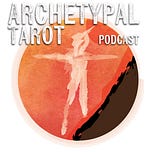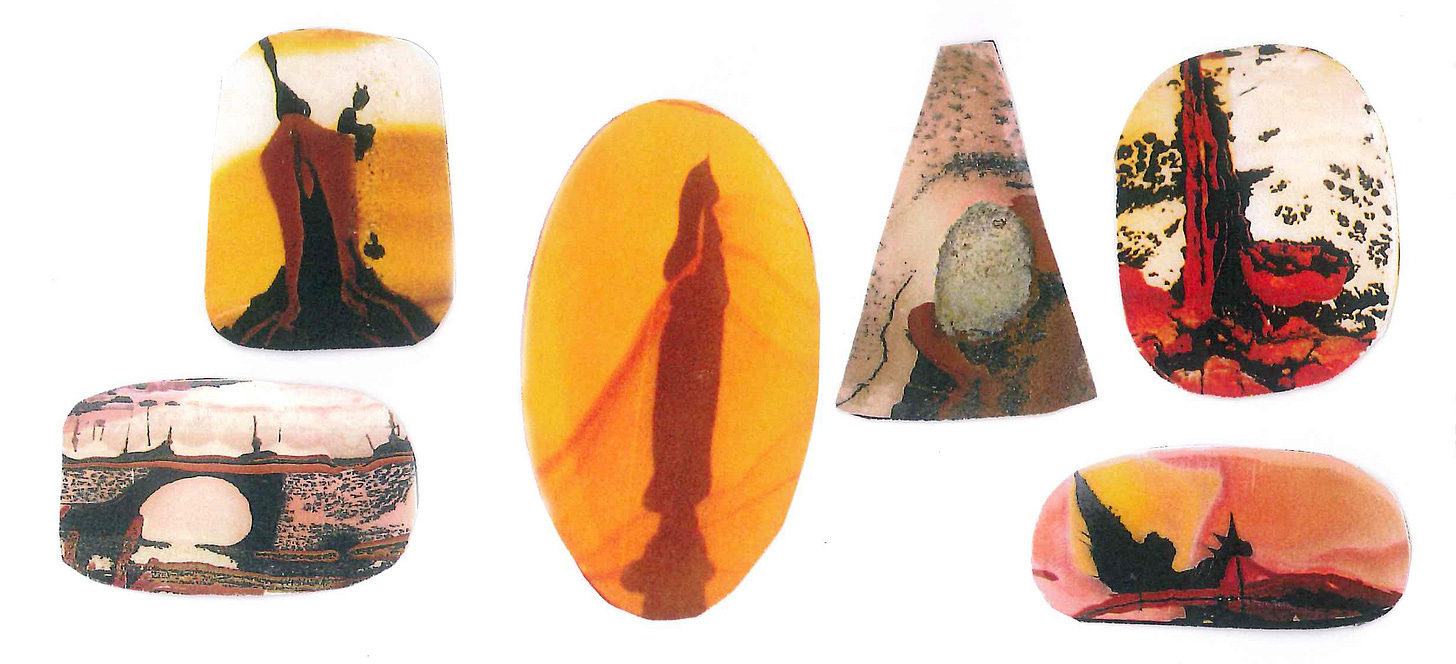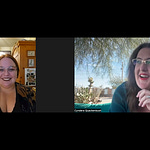This is the story of my dad’s death and discovery of the billion year-old stones. This week celebrates what would have been his 75th birthday, and 21 years since his death in 2002.
Below is the full text of what is read in this podcast, from my master’s thesis entitled The Imaginal Stone: Stories of Self and World.
James F. Quackenbush and His Discovery
In the sweltering summer of 2002, my father is dying within our house in Joshua Tree. Now, permanently in bed, he has been unconscious for a long time, perhaps to never reawaken. However, one afternoon something surprising happens.
He is wide awake.
With a little help, he sits completely up in bed. He requests some fruit juice, which is brought to him in a clear glass. He holds the vessel and looks at the dark liquid in amazement. With his face wide with awe, his eyes filled with wonder, he says, “The whole universe is in this glass!”
This memory of my father, capturing him with a foot already in the world beyond, also reveals who he was quintessentially—someone ceaselessly enthusiastic about the mystery of life. After interviewing my mom, Joni, and reading over the decades of letters and newspaper articles that encompassed his life’s work, I have come to know him, as if for the first time, as so much more than a dad. I have discovered him as an artist, writer, philosopher, and educator. To aid the telling of the story of this multifaceted man, I refer to my father and other family members by their common names.
In 1974, Jim was 25. He had been living with my mother and their first son, Joshua, in the Mojave Desert for a couple of years. He had worked at odd jobs up until then, including a gardening job in which he built a wall of stone and was also able to earn a solid enough income for a house loan. My mother said the wall he built still stands today, and it seems significant to me that my father was already working with stone before he ever made the billion-year-old art stone discovery.
Jim had befriended Peter Spoecker, an inventive, long-bearded ex-hippy, who had left an education in biology to pursue a life of artistic creation. He had a sharp sense for making money, despite his many interests off the beaten path. He painted colorful, cosmic paintings of distant worlds, and was a talented jeweler. He collected stones from across the world, from Mexican opals to Indian gems. Jim began to work with Peter, learning from him how to silversmith and selling jewelry in out-of-town craft shows. Peter, whose character was to be brutally honest and always to the point, appreciated Jim’s ability to have friendly, enthusiastic exchanges with just about anybody. Jim was a dreamer, Peter a businessman. Together they enjoyed long philosophical discussions and desert hikes scrambling through the Mojave Desert mountains. They were also intrigued by different kinds of picture rock, such as jasper, beautiful in its depiction of simple desert landscapes.
In search of similar kinds of rock, Peter and Jim backpacked out to a remote location in the Southern California desert, now known as Death Valley, and found a particular kind of shale. In repeated trips by dune buggy, they brought back 40 tons of the rock. In a letter to prospective audiences to whom they would present their discovery, Peter wrote:
“The number of vehicles worn out in this process and the amount of unbelievable physical labor involved in this phase of our work might make us appear like fanatics.”
They did not know what to expect, but dedicated nearly sixteen months to an initial slicing and grinding with diamond blades at Peter’s workshop. Warm reds, oranges, browns, and black emerged throughout seams of the slate, forming what looked like abstract images. In a letter Jim also wrote for prospective audiences, he described that the “strange shale had more variety, color and detail than any stone ever found” (personal communication, n. d.). Whereas there appeared to be an infinite amount of subject matter in the imagery revealed in the stone, he had “unwittingly stumbled into one of Nature’s hidden universes, but not without paying a price.
James Quackenbush, left, and Peter Spoecker. Photograph by David Kerr.
This price that he spoke of, in addition to the painstaking process of finding these palm-sized “masterpieces,” was the task of bringing this discovery to the world. Jim’s patience, perseverance, and his recognition of an aesthetic in-dwelling intelligence in the stone distinguished him from the rock-hound community. Though a few sold pieces of this rock under the name “Indian Paint Rock” (the rock has now adopted the new common name “Death Valley Paint Stone”) my father felt sure he was “collaborating with Mother Nature on some sort of long range art project. Our arrangement was quite simple—She supplies the raw materials, I supply the perception and imagination, and together we create Billion Year Old Art” (personal communication, n. d.). An anecdote, recorded by journalist Ken Heiman years later, captured the painstaking process of grinding through stone, whereby just the removal of of an inch of slate could 1/1000 result in the loss of a masterpiece:
Quackenbush told of the time he was sanding a stone that appeared to present a head emerging from the sands of the desert. ‘I wanted to get the image a little clearer, so I kept sanding,’ he recalled. ‘But I sanded for a second too long and the image was completely wiped out. I’ve lost as many masterpieces as I’ve found. (1987)
The stone was speaking to Jim. It was speaking with the use of images, specific or abstract: animals, religious symbols, natural phenomena, historical events, mythological beasts, even pictures of the desert where the stone had come from. Concerning this uncanny capturing of the landscape, Jim said:
To me, it’s incomprehensible—it just makes me feel that I’m working with something a lot bigger than my ego and myself. This discovery further proves to me that it’s a privilege to do. . . . I’m working with something that’s true, beautiful and, for all practical purposes, eternal.
Jim brought slabs of stone home to continue the search for perfect images, using a pencil and stencils to encircle the pictures. My mother remembered him running out from his back room to exclaim excitedly, “Look! It’s a lighthouse!” Like Adam, who named the creatures of Eden, Jim eventually realized that the stones deserved to be named individually: “Indian Messenger,” “Woman in Reflection,” “Startled Elephant,” “Moon Over Mojave,” and “Monet’s Bridge” are some of the names that came forth.
Peter and Jim began calling the growing stone collection “Desert Majesty.” With Peter’s computer technology, they made a slide-show film showing the images, and did public presentations in Tahoe, California. Jim wished to present a story of the cosmos with images instead of words, so that its connection to humankind would be universal. In the first newspaper article that reported their work, just 18 months after the discovery, the images within the rocks were described as a trip through time, holding pictures of earthly existence even before it had transpired:
“It’s almost as if the rock being formed those eons ago were acting like modern-day film, taking pictures of this period of evolution in one corner of the globe and then storing it safely away” (Emerson, 1977, p. 14).
Project Billion-Year-Old-Art had one catch, my mother remembered. The sale of stones, usually as pendants, was the only way to fund the project, and was not making enough profit. For Peter, this sensibly was a necessary component for projects in which so much time was invested. Also, his diversity of interests was drawing him elsewhere. He wanted Jim’s personable salesmanship to accompany him, but Jim had a vision for the stones and wanted to continue working with them.
Meanwhile, Jemma, the second son, had been born, and the family suffered from the lack of money. Having no car in the desert was exceedingly difficult. Though unquestionably supportive of her husband’s vision, Joni spoke up, suggesting that the stones be put “on the back burner” while he tried some other ways to bring in money. Jim appeared to be stubborn in his dedication to the stones, but he did not lack self- questioning. In the letter cited previously he wrote,
“Compared to the astronomical age of these stones, I’m afraid I’ll be abandoning them before they’ve scarcely noticed my existence. So, why should I even try? Why should I even bother with this project?” (personal communication, n.d.).
For 14 summers, Jim ventured to Tahoe and Stanford University to sell pendants. The craft show life was not easy; he faced the constant threat of theft, indifference and, most annoyingly for him, the frequent disbelief that the images were natural. He eventually posted a sign that stated: “I know it’s hard to believe, but these stones are not painted, DAMN IT!” However, several connections were made during this time including support from an art gallery. Lee Gwynne, owner of the Gwynne gallery, wrote in a letter of recommendation that
“scenes within the stone resemble Gobelin tapestries; others look like cosmic scenes of Salvador Dali; others look like landscapes from the Sung and Ming Dynasties. I could go on but the Desert Majesty can only really speak for itself” (personal communication, July 14, 1977).
A notable string of synchronicities for one woman, Barbara Honegger, occurred after she purchased a stone pendant from my father at Stanford. In a letter to my father, she described the stone, which featured “a red landscape, like Mars, in which the ‘sun’ in the distance has onion-like rings around it” (personal communication, March 4, 1980). The very evening she made the purchase a business partner, a head engineer at NASA- Ames, invited her to witness the first images of the surface of Mars to come in from the Space Shuttle. Jumping out of bed early the next morning with the stone around her neck, she saw the first picture to come in.
She wrote in the letter: “Jim—it was the image on the stone around my neck! Because of the properties of the lenses used by the landing craft on Mars, the sunrise, or sunset—I don’t recall right now which it was—had those same onion-peel-like concentric circles around the sun! And the red soil was just as in the Art Stone.”
In 1980, Jim received an invitation to present Project Billion-Year-Old Art at Thatcher high school in Ojai, California. This event foreshadowed the work he would pursue more than a decade later. In a letter from Thatcher to my father following the event, the reviews were tremendously positive. An astronomer on the faculty stated that it was a “challenging and imaginative journey into the core of the earth . . . and our own imaginations” (personal communication, February 15, 1980).
A mathematician stated,
“The exhibit made me more aware of the organization of beauty in nature. Previously I saw our environment without perceiving it.”
The letter also contained a scientist’s note (rather comically) on my father’s capacity to have a long-term plan: “Very valuable for our young people to have met someone who has made a 20-year commitment to a goal. This tended to give perspective to their inability to think more than a day in advance. The presentation was fantastic!”
Perhaps the most exciting public development since the discovery happened in 1984, when the Billion-year-old Art stones were featured on the television show Ripley’ s Believe it or Not! (Ripley, 1982). The whole family was ecstatic at this exposure. My brothers had a great time interacting with the television crew, and the resulting clip portrayed my father’s work convincingly.
The difficulties with money continued, however, and with another child (me) on the way, the financial strain began to weigh more heavily on my dad.
“Well, I’m really interested in the education of children,” Jim said one night, my mother remembered. With an animated ability to tell bedtime stories, he had enjoyed capturing the imaginations of his sons. He also had a killer Donald Duck impression. “Maybe I can try substitute teaching for awhile,” he told her.
Two years of substitute teaching lead to five years of teaching second grade. During this period of time, the letters about the project ceased. The stones, the 175 masterpieces my father had framed and named, were temporarily laid to rest.
In the meantime, Jim pioneered new teaching techniques. He kept an exercise chair in the back of the classroom for hyperactive kids disrupting the class. Not bothering to take the hour break provided by the physical education teacher, he designed his own frisbee physical education class. He used this time outdoors to work out behavior problems and eradicate bullying. He had the kids act out storybooks, such as Where the Wild Things Are. He had the best attendance record at Twenty-Nine Palms Elementary School.
The Billion-Year-Old Art Stones re-emerged in 1993 at the Joshua Tree community center. The front-page local newspaper article displayed a huge photograph of “Bird at Sunset” and introduced the stones this way:
Over a billion years ago, nature knew what life on earth would be like today. The progression of man, the space shuttle and even the Loch Ness Monster were all anticipated, as was the eventual indifference of man to nature’s beauty. So nature began to chronicle what was forthcoming in the most brilliant, magnificent and everlasting way possible. Nature worked fervently to form vivid pictures of the most beautiful and unusual aspects of life, then and now, and tucked the images away in rock for man to discover on his own.
Hundreds of millions of years later, local teacher Jim Quackenbush stumbled upon this work of nature. Looking for art in its truest form—the art developed by nature, Quackenbush found the images that would change his life and he hopes will change the future of education in America. (Murphy, 1993, p. A1)
The imagination and reflection within this newspaper article, personifying Nature herself, reads almost like a myth. Here, the stones are ascribed with a magical quality of prophecy and storytelling—such a far cry from the trained objectivity of most headline journalists!
The art stones had awakened from their rest, as my father was ripe for a whole new phase with the project.
Jim combined the words “cosmos,” the universe, and “osmosis,” which means “merging into,” to create his traveling educational event, “Cosmosis.” The three-day event challenged students with a question, a great mystery: “How did the images get in the rock?” Cosmosis was multi-dimensional, encompassing the use of mathematics, science, history, art, reading, and writing. Elementary school kids were assigned hands- on tasks such as Polaroid photojournalism, camera videotaping, conducting interviews, leading guided tours of the exhibit, and grinding-and-finding their own masterpieces. Students could become owners of a stone if they mailed in illustrated stories about the stones or stone images. A 1996 newspaper article reported, “‘I think it’s amazing that when you grind it, you find pictures,’ fifth grader Tanya Hand said, holding up a quarter- inch thick square of stone. ‘In this little rock there could be over a thousand’” (Orloff, 1996, p. A1).
Described as “a bespectacled and bearded Pied Piper” (Yarborough, 1998, p. 4) and as having “a touch of the fervor of medicine men of old” (p. 4), Jim’s enthusiasm was infectious with the kids, teachers, and parent volunteers. Watching videotaped footage from these events, I witnessed how children were given the trust and responsibility of adults, and how adults could return to a place of childlike wonder. The newspapers captured the reactions of the kids:
Chelsea felt a bond with the piece “Sundancer,” which depicts an Indian dancing under the sun, because “my great grandmother was Apache Indian and every time an Indian mother gave birth the father would go out and dance in the sun.”
A depiction of a crucifix on a hill was James’s favorite artstone and led to this observation, “I think God gave this to us for a reason and to Mr. Q. not just for artwork.” (Gast, 1994, p. C1)
The fact that my dad traveled and carried out these events (over 60 schools) completely on his own still amazes me. Depending only on school staff and parent volunteers, he would sometimes set up the whole event on his own if their help fell through. Despite his positive attitude in the face of an entire school, there is no doubt that these assemblies were stressful and took their toll. I have often wondered if this stress was partially responsible for his diagnosis with colon cancer.
In going through this family history, I realize for the first time the success my father achieved. He never made a fortune, but his independent career, with a vocation he loved, kept our family afloat. Another journalist quoted my Dad when he said:
“I am lucky and rich. I am doing something that I absolutely love and believe in. It’s even better than winning the lottery. And if I did win the lottery, I would still do exactly what I am doing now” (as cited in Corral, 1995, p. A8).
On July 11, 2002 my father died. By his own request, no memorial service was held and his ashes were scattered into the Pacific Ocean. Peter Spoecker was found three years later, floating in Evolution Lake, located on the John Muir Trail in California’s King’s Canyon National Park, considered to be one of the most beautiful sights of the Sierras. Before his death brought on by either a fall or hypothermia, Peter spent his last day also in the view of the tallest summit of the area, Mount Darwin. Though this was like losing another member of the family, there was something about this end that felt tailored to this fiercely independent, artist explorer - my father’s best friend.
The stones, having waited in the earth for over a billion years, had found a new form in the perspective of human beings. Polished, framed, and named, 175 in total, made up the masterpiece collection. They held possibility and mystery; they held a story. Though my father’s relationship with them had lasted for only a blink of an eye in the time of their total existence, the stones held a promise to prevail indefinitely, as perfect as the day they were formed. In that way, within the stones, pieces of my father’s perspective remained and are still accessible to this day. When I look at them, it is like he is silently looking back.
The stones still captivate and command human attention, and under the gaze of ancient stone, how could I deny their calling?
Walking the Path. Photograph by David Kerr.

















Share this post